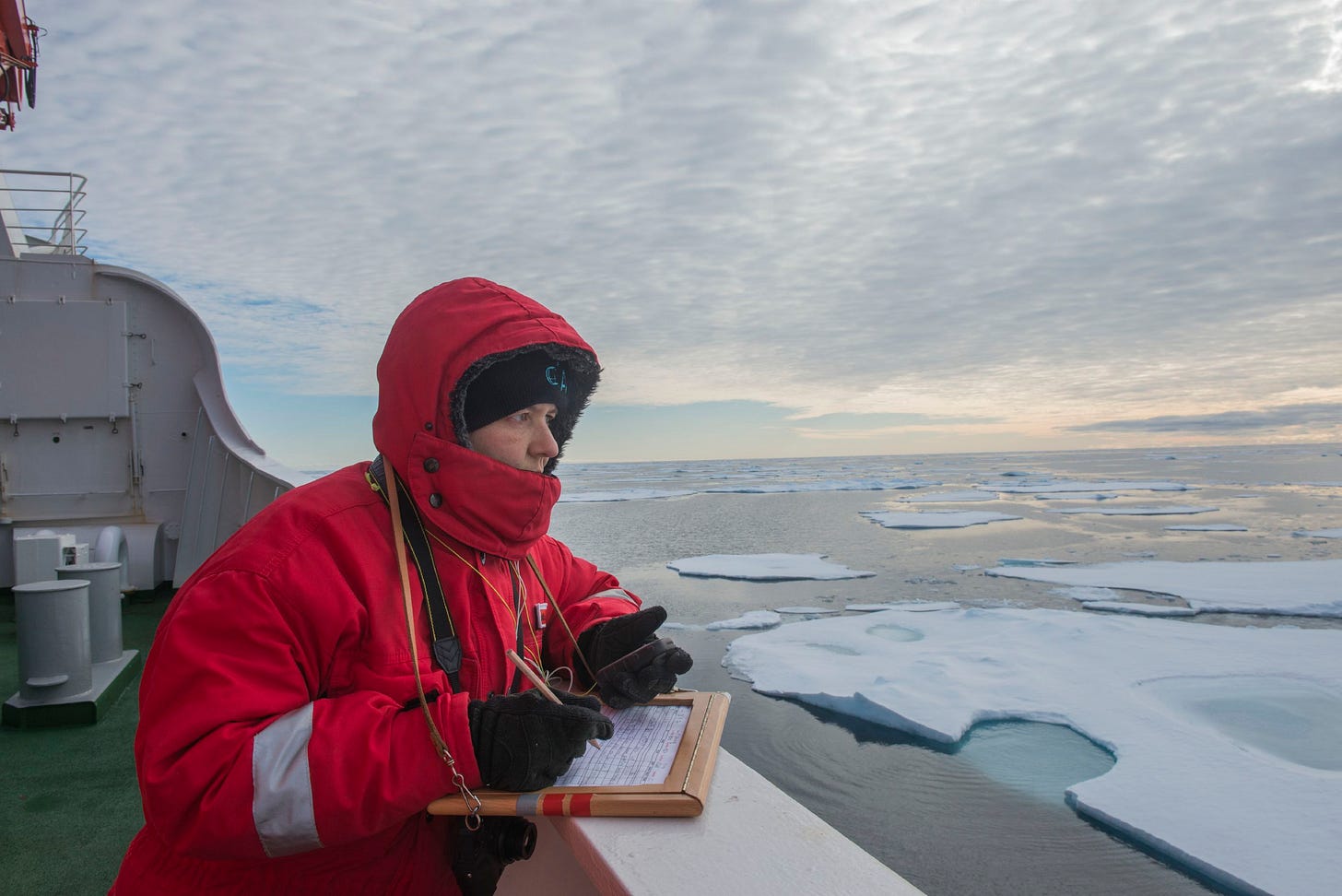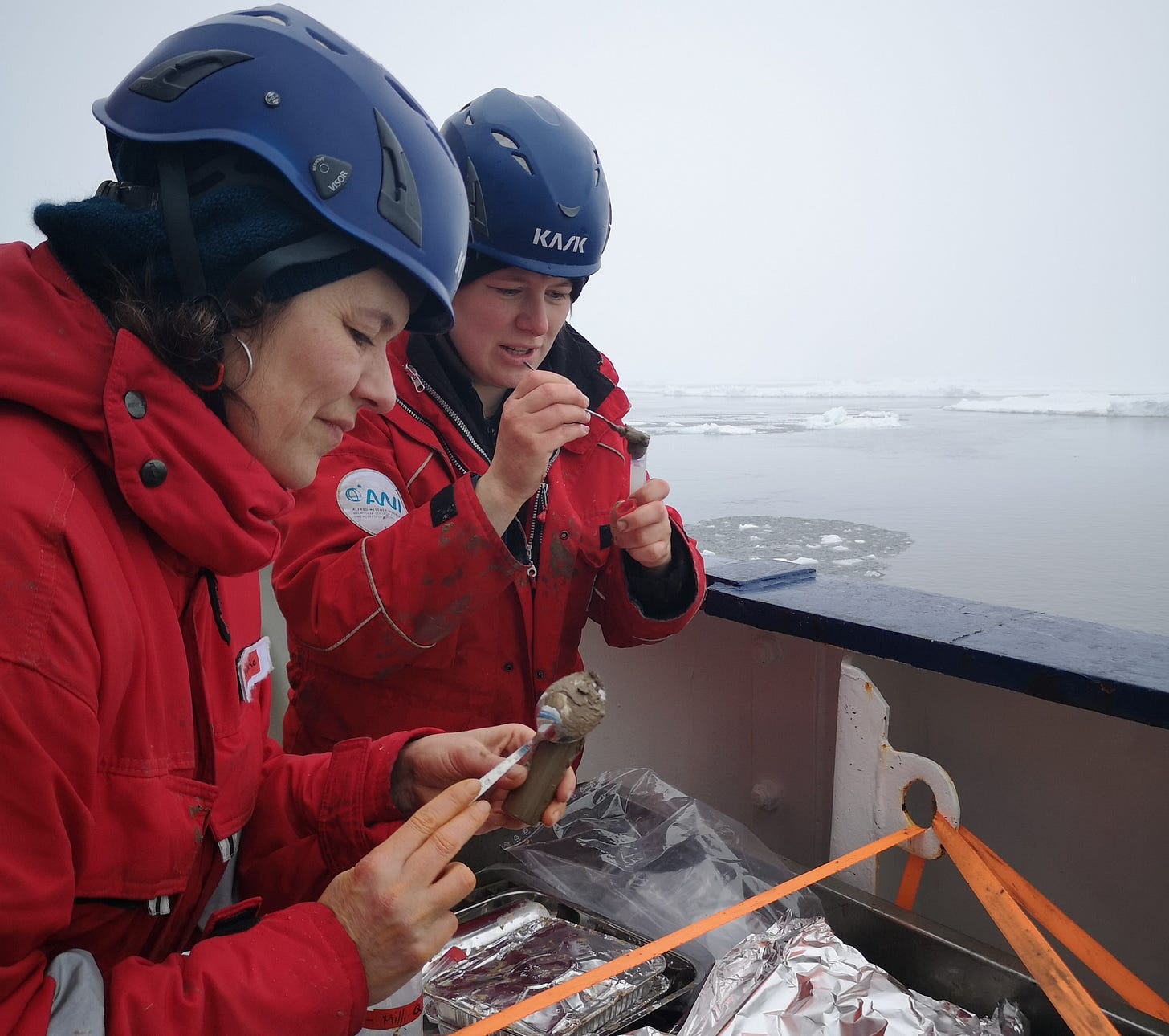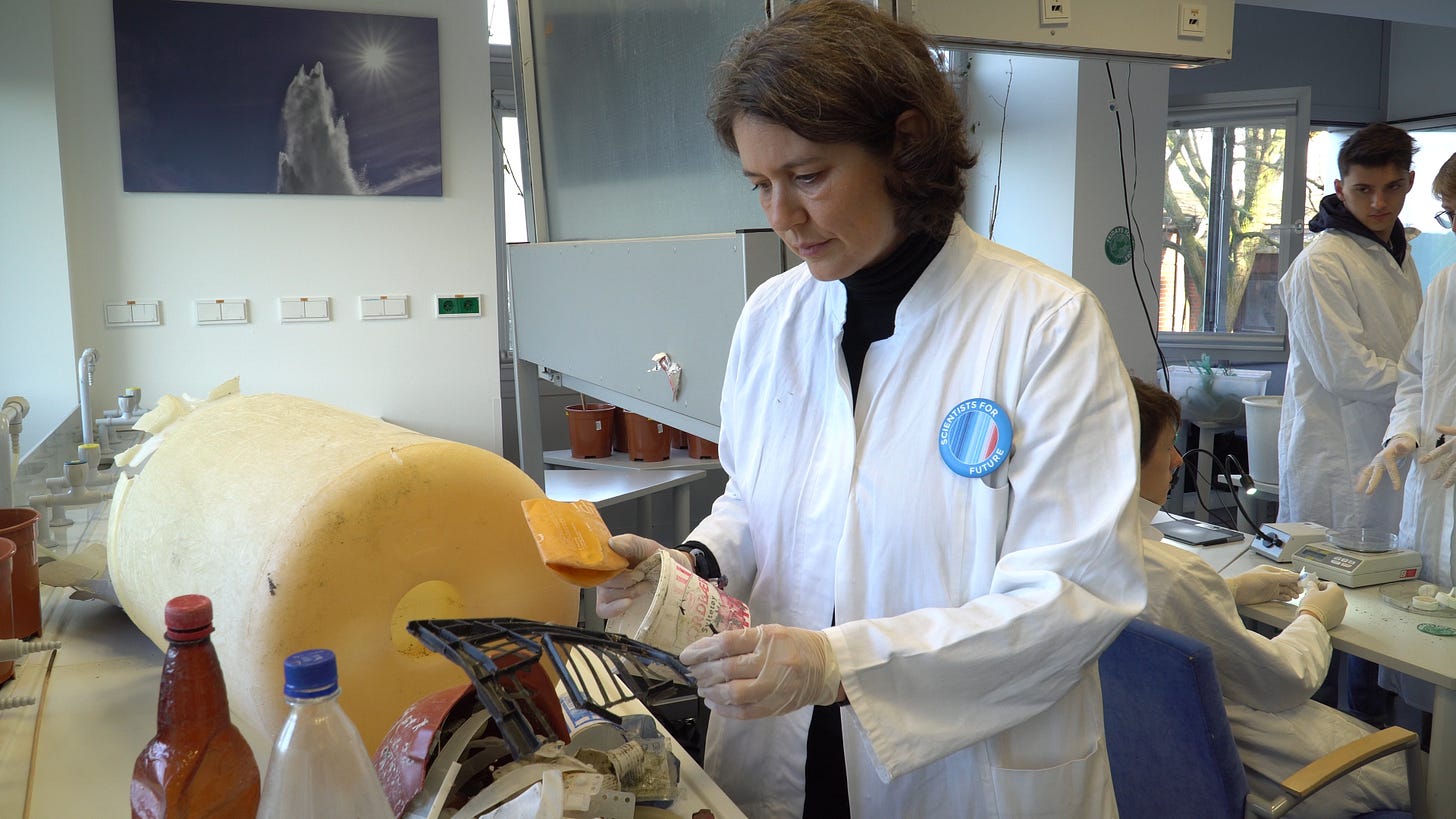“No to Food. Yes to Microplastics.” Arctic Wildlife Forced to Welcome Environmental Pollution
“If you're only looking at the large plastics, then you will seriously underestimate what's in the environment, unfortunately.”

While people often think that there isn't enough happening in the Arctic to be affected by the frequent anthropogenic activities that go on in the rest of the world, The Habibat Project reports that that is not the case.
A lot of plastic pollution goes on in the Arctic and often is not detected except via special techniques. Why is this a problem in the first case? Plastics live with humans for too long, because they are non-biodegradable substances, and they end up contaminating our environment in terms of physical alteration, as reflected in dump sites, agricultural land, and drainages blocked by waste and, chemical intoxication, in terms of how it affects the health of humans and other living biodiversity on Earth. Plastics eventually become microplastics after diminishing into fragmented invisible forms over a long period of time and climate variations.
The Arctic is the cold far-away northernmost polar region of Earth that, due to its very low temperature, would naturally be considered quite hostile to live in, and that would mean zero to minimal human pollution. But in an interview with award-winning biologist and polar deep-sea researcher at the Alfred Wegener Institute, Helmholtz Centre for Polar and Marine Research (AWI), Dr Melanie Bergmann, we are informed that the pollution level in sediments at the Arctic surpasses that of the North Sea, and that some wildlife in the Arctic would feed on microplastics instead of their natural diet in a sudden twist of fate.
In this interview, The Habibat Project learns from her, what exactly is responsible for this level of pollution accompanied by drastic changes in natural patterns, and what her role is in mitigating the consequences of this level of microplastic pollution in the region. Dr Bergmann was hitherto the founder of Litterbase, which gave us detailed breakdown of microplastic pollution around the world, gathering its credible info from research studies, until its temporary hiatus in 2020; she is also now considering restarting it.
(This interview has been edited for length and clarity)
What is the state of microplastics in the Arctic region exactly?
Well, it is quite high in the Arctic region. It depends on where you're looking, but we found extremely high microplastic levels in sea ice and also in the deep-sea sediments, up to 12,000 particles per kilogram of sediment. So that's actually really quite a lot, especially because supposedly we're very far away from the main sources and, because, the Arctic is largely uninhabited. That [number] actually surpasses some of the thresholds that had been suggested by people who do work on risk assessments. The reason why we're finding so many microplastics might also be because we use quite sensitive methods that can also detect very small microplastics. A lot of other laboratories don't have these facilities, so they measure only the larger plastics and, actually, we find that 80 to 90% of the particles that we measured were in the very smallest size range. If you're only looking at the large plastics, then you will seriously underestimate what's in the environment, unfortunately. The analysis pipeline that we're using is quite sophisticated; not everyone has the ability and finances to do these types of measurements. So, on one hand, it's good because you can show what is there. On the other hand, it's a bit of a shame that we always find very high levels of pollution because of the methodology that we use, but we have also done studies, using the same methodology, on sediments in the North Sea and some other parts of the world and, actually, the levels found in the Arctic sediments were higher.
What are the reasons for so many microplastics in the Arctic, and what are the likely consequences on the Arctic area?
On one hand, you get Atlantic currents basically bringing everything from our part of the world to The North. Another reason would be local emissions, because there are actually quite a few fishing boats operating in the area now. There are also inhabited places in Siberia. Another reason is that there are rivers discharging their water into the Arctic Ocean and, while the Arctic Ocean comprises only 1 to 2% of the global ocean volume, say it receives 10% of the global river discharge. So, it's actually quite a lot of water that is coming out of these rivers into the Arctic Ocean, and some of these rivers do pass [through] some cities or run through agricultural land and, in the winter [when frozen], they are used almost like roads, because vehicles drive on them. We have atmospheric microplastics, because we did also find quite a lot of microplastics in snow samples. We also found microplastics in air samples, but we haven't published this yet. And if you look at the main air current systems in our research area in the Fram Strait, you will see that it comes basically from different directions into our area, bringing the particles with the air into that area. So, these are the main pathways. Also, tourism has increased a lot in the area. The numbers and sizes of cruise ships have increased a lot over the past 10 years. Even when they don't discharge plastics on purpose, wherever you find a ship, you will have a plastic imprint, through the graywater, or just stuff being blown overboard in some way or another. And if you have big cruise ships with thousands of people, it's inevitable.
What are the consequences for the living organisms there?
We haven't got so much data here, because it's very difficult to get the samples from the Arctic, unlike in the North Sea. Now we [researchers] are starting to look at how much [of microplastics] do we find in the animals and what might be the effects? We can't really do effect studies with Arctic animals, as it's more difficult to keep them in the laboratory, because they live under very different conditions – as soon as you bring them up, they're dead or so stressed that you cannot do anything with them anymore. So I think it's reasonable to assume that they're at least as vulnerable or prone to effects [of microplastics] as other animals that have been studied in other areas, possibly more so because they are already under serious threat from climate change, because climate change is happening in the Arctic four times faster than the global average. And lots of things are not in balance anymore, so to say. For instance, if animals eat microplastics rather than nutritious particles that they usually would, then it puts further stress on them.
You did some work in a pollution observatory. What was the nature of your work?
Basically, since 1999, the Alfred Wegener Institute have [had] this observatory in the Farm Strait in the West of Svalbard, we call it Hausgarten Observatory, and we do a lot of research on all the different parts of the ecosystem, from the sea surface down to the deep seafloor. And my role was to analyze photographs from the ocean floor to look at changes in the organisms living there. So every year, we would take a camera down and tow it along a certain stretch of the seabed. And the next year, we would do exactly the same. Then you can compare the photographs from the different years to see if there's [been] any changes in the organisms there. While I was doing that, I was seeing more and more plastic debris in the images; we found that we had a seven-fold increase in marine debris. And that's not only plastic, that's all the anthropogenic items, because we also find a lot of glass down there. So, there was a big increase over 13 years, basically.
There is a lot of focus on some new methods that exist to be able to detect microplastics in our environment. Can you shed more light on these new methods?
It's something we call Micro-FTIR, it's Fourier Transform Infrared Spectroscopy. And we basically shine infrared rays on particles to get a spectrum, and then we compare the spectrum with spectra of known substances and delineate what it could be in simple terms. This [method] enables us to look at smaller particles, because some of the other analyses work only for larger particles that are, for example, larger than 300 microns as they rely on visual selection of putative microplastics.
Is Litterbase, the global microplastic pollution tracking platform, still regularly updated for public use?
Not anymore. We had to stop. When we started it in 2016, a lot less [research] was published. The number of scientific publications have skyrocketed in recent years and, every year, it's increasing, so it's just impossible to do that [maintain Litterbase]. It stopped in 2020, unfortunately, because, I couldn't do anything else anymore if I was doing that, and [it] also would require more quality assurance, because we did it manually; basically, you need a person to look at all the publications that are coming out to first find out which ones are relevant to Litterbase, that already takes a lot of time, and then you need someone to read the publication and enter all the details into the computer according to this format that we have and, that, of course, also takes quite a lot of time. When you do something like this, you end up with inconsistencies or errors but, often, it's just inconsistencies. So you do need some sort of data quality assurance process to check up on this every now and then and, that, we hadn't put into place either. Litterbase was mostly intended to be a public outreach tool, not so much a scientific metaanalysis type of thing.
Is that the end?
We were considering putting it up again with my former PhD student, Mine Tekman. She is exploring ways to revive it, but there's nothing on the horizon yet. So, we'll see.

Are you working on any research that points to what we can expect going forward in terms of the handling of plastic waste everywhere around the world?
Not me, specifically. I am part of the Scientists’ Coalition for an Effective Plastics Treaty, which tries to inform these UN plastic treaty negotiations. We're doing a lot of outreach to the negotiators. We're writing policy briefs, fact sheets, and when there are negotiation rounds, like there was one in Nairobi [Kenya], another in Ottawa [Canada], Paris [France]; the next one will be in South Korea in November. We go to these negotiations and try to approach country negotiators to provide them with the scientific evidence available because, quite often, they are not aware of the state of knowledge already there. Sometimes, some of them even have lobbyists, industry lobbyists, in their delegations, and there was a lot of lobbyism happening around these negotiations in Ottawa. It was just terrible.



Recycling of industrial waste should be done in a more environmental friendly way. We are the ones using our hands to kill ourselves. This little things might seems small but it has drastic effects on the environment. We all have a role to play in this
Really enlightening, now humans should know that there are plastics that turn microplastics overtime. And without proper attention more harm will be affected, not only to the animals living in the Arctic region and even humans at large.